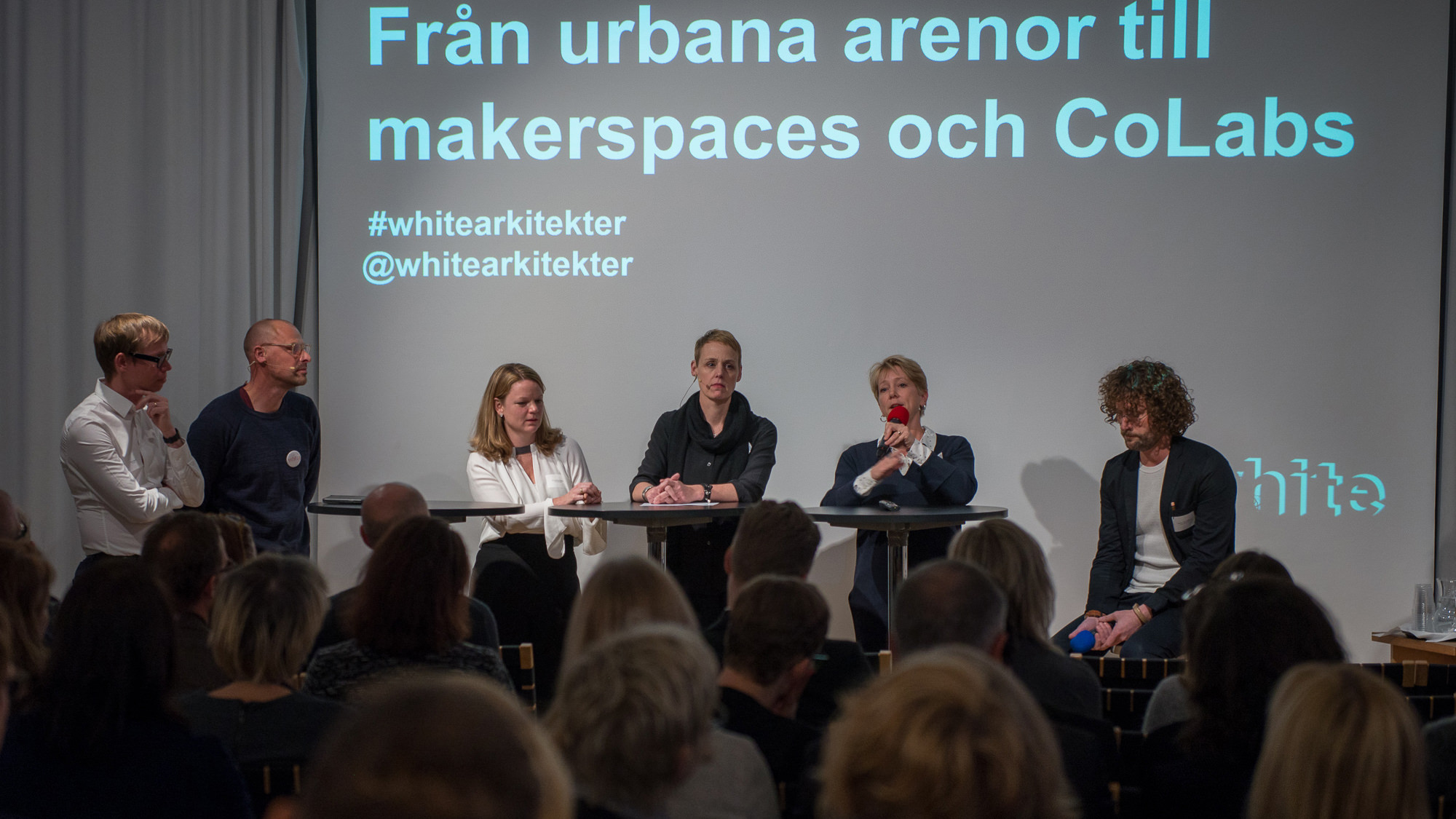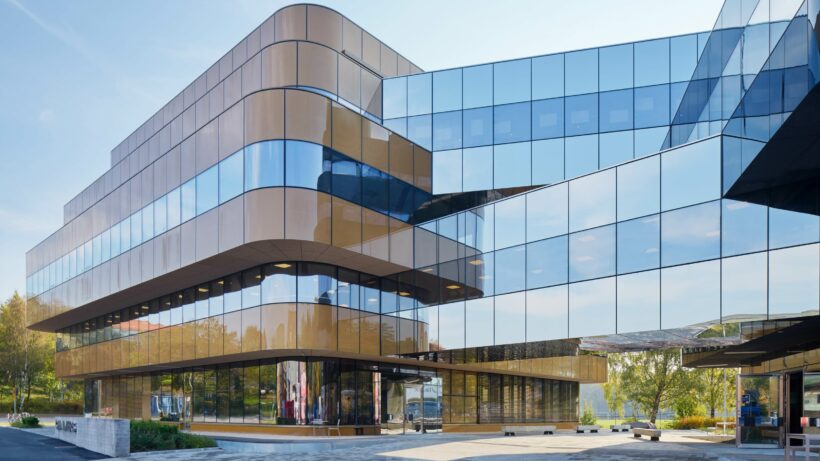On January 19, White Arkitekter organised the seminar From urban arenas to maker spaces and co-labs, in which architects, academia, municipalities, county councils and property owners explored how the attractive design of an environment can contribute to future cross-border collaboration and stimulate innovative solutions. At the bottom of this page, you’ll find presentations from this seminar. Enjoy!

Attractive environments create better innovations
If we are to solve the challenges of the future, we must create the right conditions for new ideas to grow and prosper, says Linda Mattsson.
From urban arenas to maker spaces and co-labs
Today, entire neighbourhoods, buildings and fit-for-purpose venues are planned to act as platforms for the exchange of new ideas as well as facilitate meetings across social borders. How do we ensure that it is done in the best way possible – and does it create the hotbed for collaboration and innovation we desire? This question is relevant to players across industries and sectors.
In the Stockholm region alone, three major urban development projects with a focus on research, collaboration and innovation are currently underway: Hagastaden, Kista and Flemingsberg. Around the country, several major investments are being made in similar projects.
If we are to solve the challenges of the future, we must create the right conditions for new ideas to grow and prosper.
The landmark building at Johanneberg Science Park in Gothenburg sets a good example of how to successfully combine industries and sectors. Not only to foster innovation – these settings also give competitive advantage in the tough international competition for attracting students and researchers.

If we are to solve the challenges of the future, we must create the right conditions where new ideas can grow and prosper to make a real difference in society – whether the ideas are solutions for achieving the UN Global Goals or innovations that lead to new jobs. As architects, we can contribute by creating the conditions required – attractive environments. We’re up for the task, let’s collaborate!
Linda Mattsson is a partner and architect at White Arkitekter. She has extensive experience of driving large, complex projects within higher education and healthcare.
Presentations January 19, 2018: From urban arenas to maker spaces and co-labs
Through 7 pitches, we explored this area together with our guest speakers and the 100+ participants.
You can now watch the seminar or download the presentations below.
1. Cultivating a future mindset – Tobias Degsell, Combiner
Tobias Degsell is the former curator of the Nobel Museum and has spent a large amount of time studying the 923 Nobel Prize laureats. It is time to revise the image of the lonely genius – magic happens in true creative physical environments where people are connected to each other and collaborate. In his key note you will hear more about his thesis why 98 affiliates of the University of Cambridge have been awarded the Nobel Prize since 1904. Download the presentation as pdf.
2. Common knowledge – building for innovation beyond the Silicon Valley model – Emma Read Källblad, Thinkscape Design
The creation of new knowledge, technology and innovation is dependent upon population growth, openness, engagement and diversity – activities that the physical fabric of Silicon Valley now creates few opportunities for. How can other knowledge cities avoid the fate of Silicon Valley and sustain growth? Download the presentation as pdf.
3. Conditions for innovation – Magnus Thure Nilsson, Media Evolution City
Media Evolution City is a co-creative hub for the media industries in Malmö. The main purpose of the house is to create conditions for growth and development through bringing people together. The concept is based on knowledge exchange and a culture where sharing is caring – a culture proved to be succesful. Download the presentation as pdf.
4. Activity-based workplaces for researchers – Filiz Coskun, White Arkitekter
Previously, Sweden’s institutes for higher education have solemnly been focusing on the student environments. But now we see that new workplaces for researchers are being developed nationally. White Research Lab and Thomas Nathorst Böös have made an evaluation of knowledge including the academy’s conditions and different types of workplaces. Download the presentation as pdf.
5. A prototype for activity-based workplaces for researchers – Sofia Ritzén, KTH, and Hanna Plato, White Arkitekter
A group of researchers at KTH stated to experiment on their own physical environment together with White Arkitekter. A process was developed where all colleagues were included in this small project. Learn more about their prototype that showed great outcome can be created with very small means. Download the presentation as pdf.
6. A report from the International Symposium on Academic Makerspaces (ISAM 2017, Cleveland, Ohio) – Jasmina Jovanovic Holm, White Arkitekter
What is an academic makerspace and how can it become an important tool for creativity? Download the presentation as pdf.
7. Pitch n’ catch – Project review from campus masterplans to interiors – Linda Mattsson and Magnus Lindgren, White Arkitekter
A quick but broad illustration of White Arkitekter’s work on environments for research and collaboration – from urban design to interior design. Download the presentation as pdf.
Contact the author
